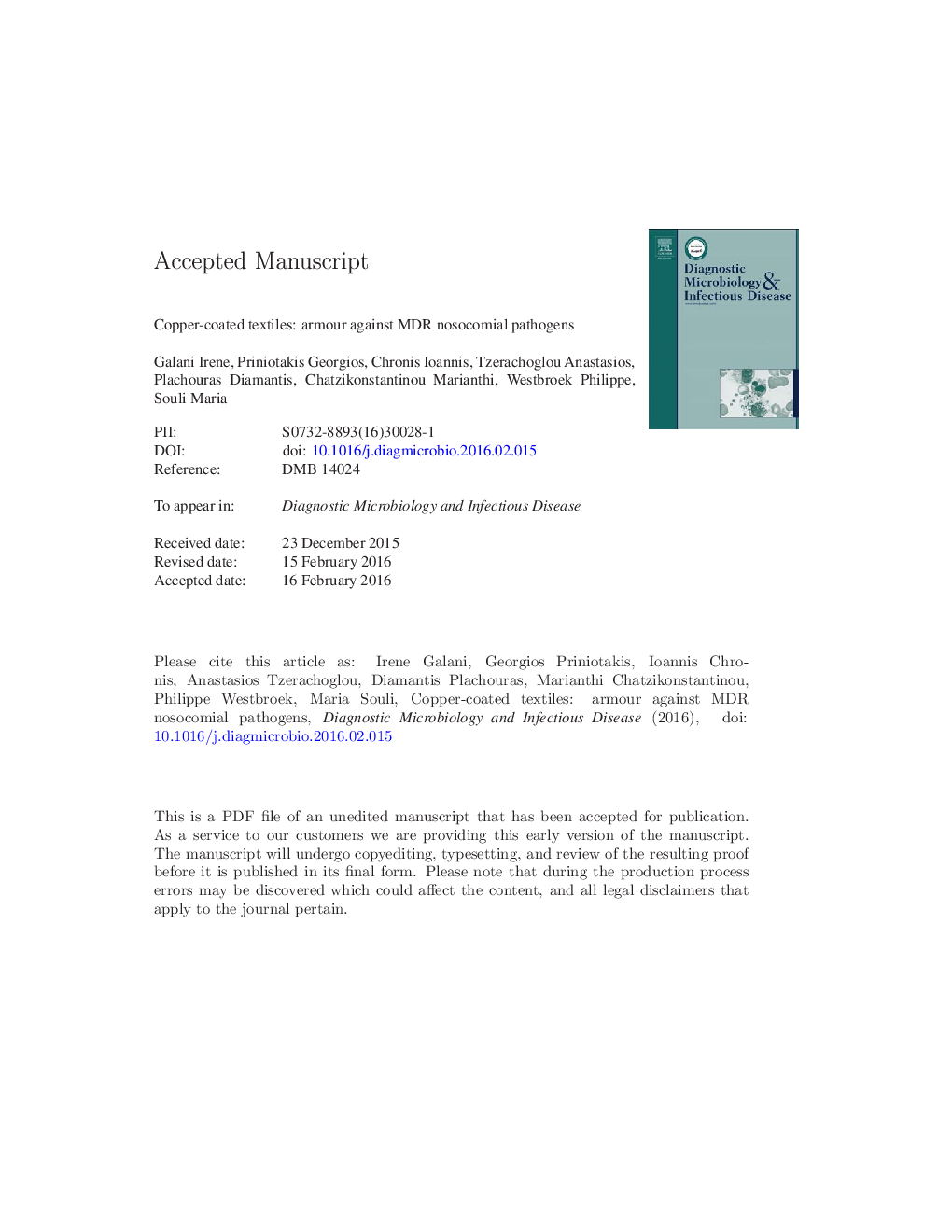| Article ID | Journal | Published Year | Pages | File Type |
|---|---|---|---|---|
| 6115491 | Diagnostic Microbiology and Infectious Disease | 2016 | 24 Pages |
Abstract
Soft surfaces in the health-care setting harbor potentially pathogenic bacteria and fungi that can be transferred to patients and personnel. We evaluated the in vitro antimicrobial efficacy of two types of innovative copper-coated textiles against a variety of nosocomial multi-drug resistant (MDR) pathogens. Five isolates each of MDR Staphylococcus aureus, Klebsiella pneumoniae, Pseudomonas aeruginosa, Acinetobacter baumannii and Enterococcus faecium as well as three Candida parapsilosis were tested. The antimicrobial activity of copper-coated para-aramide and copper-coated polyester swatches was compared to that of non-copper coated controls using a quantitative method. Reduction of viable colonies by >3log10 from starting inoculum was characterized as bactericidal activity. No viable colonies of S. aureus, P. aeruginosa, E. faecium and C. parapsilosis were recovered after the first hour of contact while for A. baumannii, no viable colonies were recovered after only 15Â min of contact with either type of copper-coated textiles. Copper-coated para-aramide exhibited a bactericidal effect at 15Â min of contact with A. baumannii, at 1Â h with S. aureus, P. aeruginosa, E. faecium and C. parapsilosis and at 3Â h with K. pneumoniae. Copper-coated polyester was bactericidal at 15Â min of contact for A. baumannii and at 1Â h for the other species tested. Both copper-coated textiles exhibited a rapid and significant antimicrobial effect. Antimicrobial textiles may have a role in the arsenal of strategies aiming to reduce environmental contamination in the health-care setting.
Related Topics
Life Sciences
Immunology and Microbiology
Applied Microbiology and Biotechnology
Authors
Galani Irene, Priniotakis Georgios, Chronis Ioannis, Tzerachoglou Anastasios, Plachouras Diamantis, Chatzikonstantinou Marianthi, Westbroek Philippe, Souli Maria,
